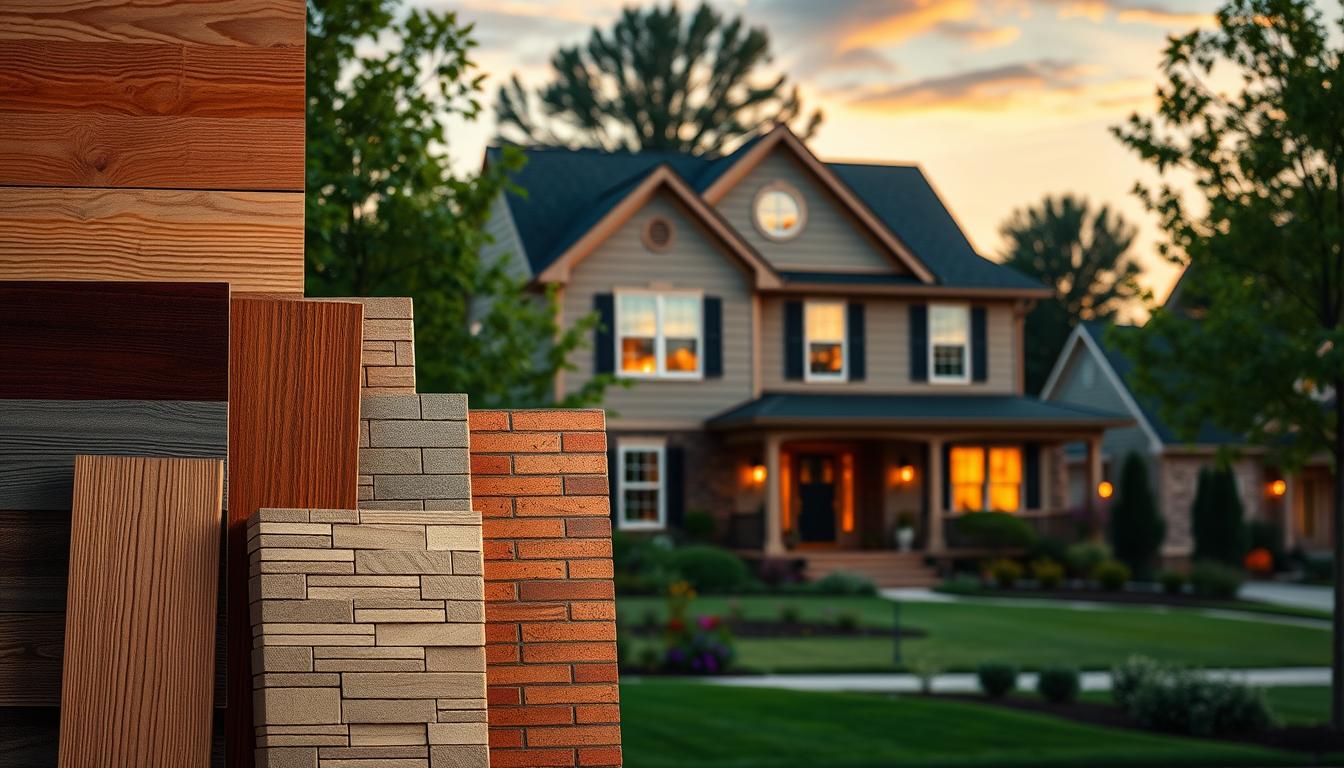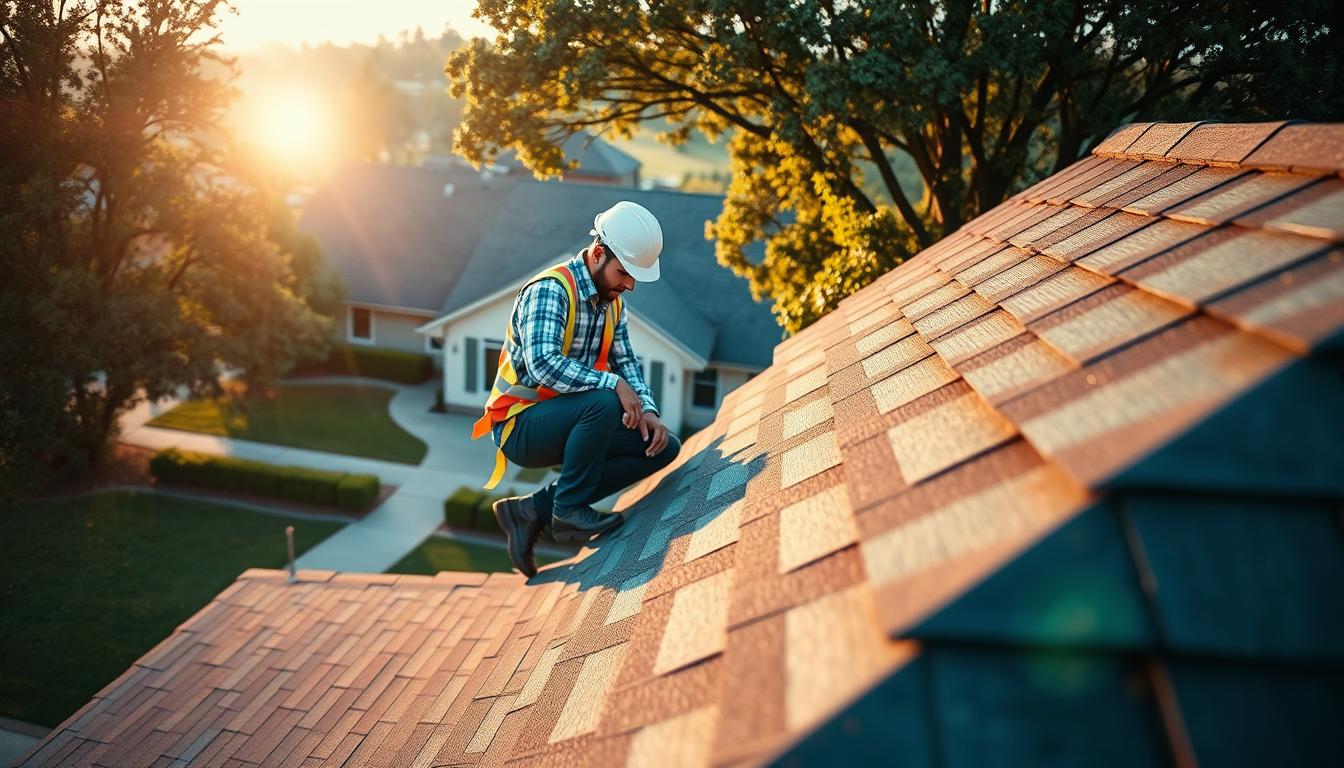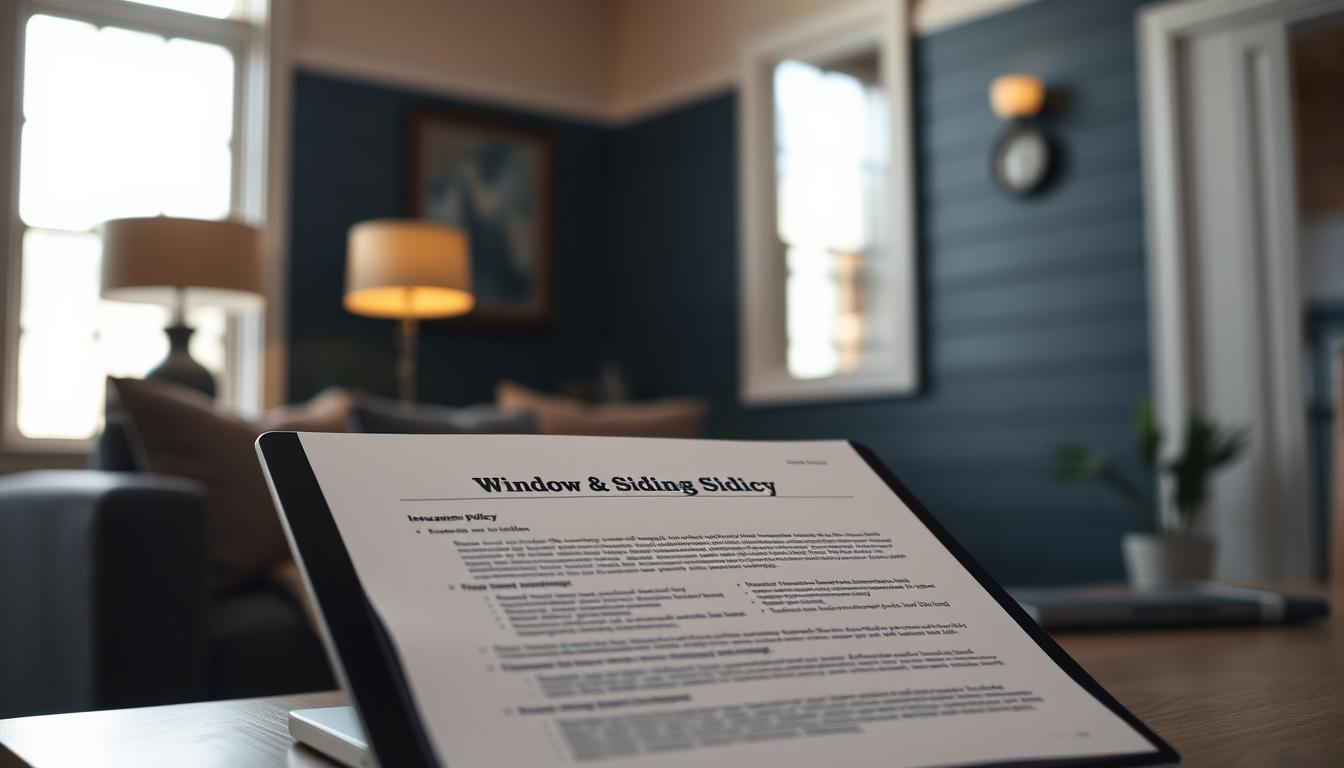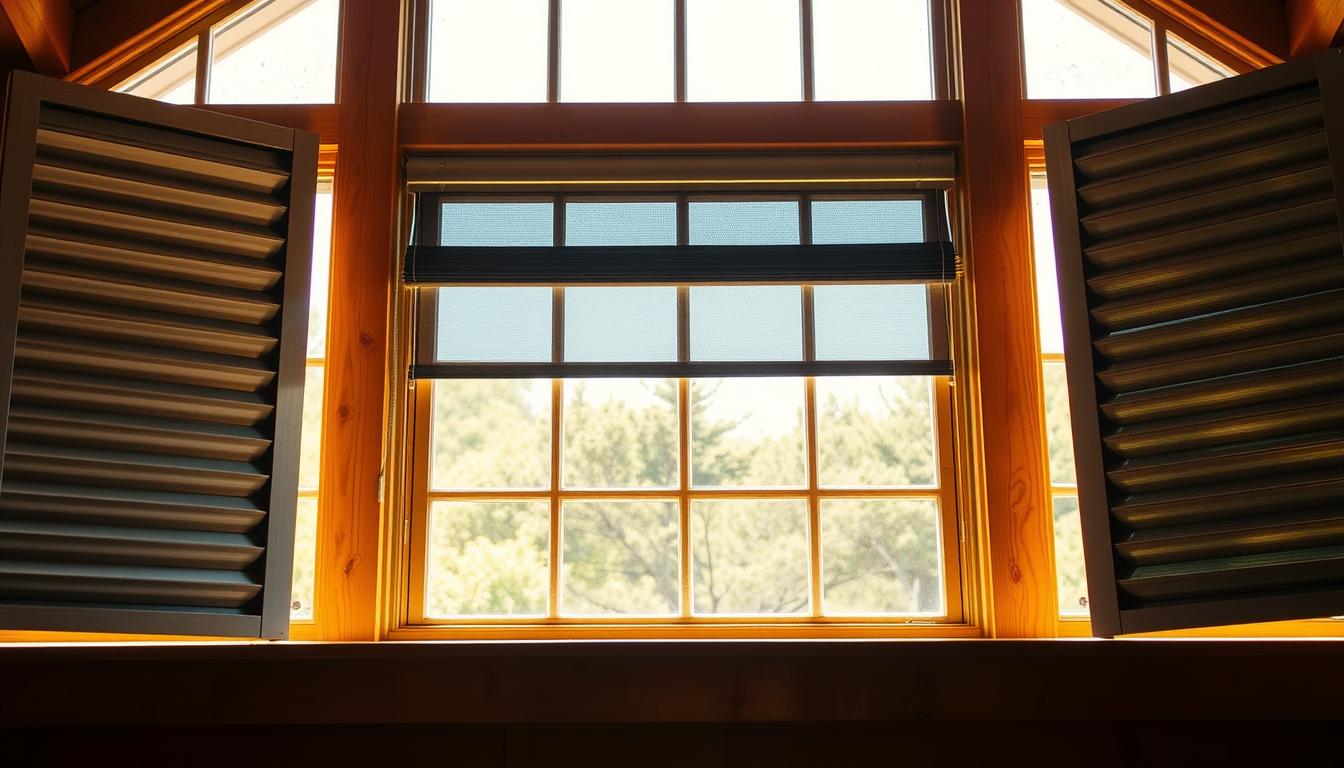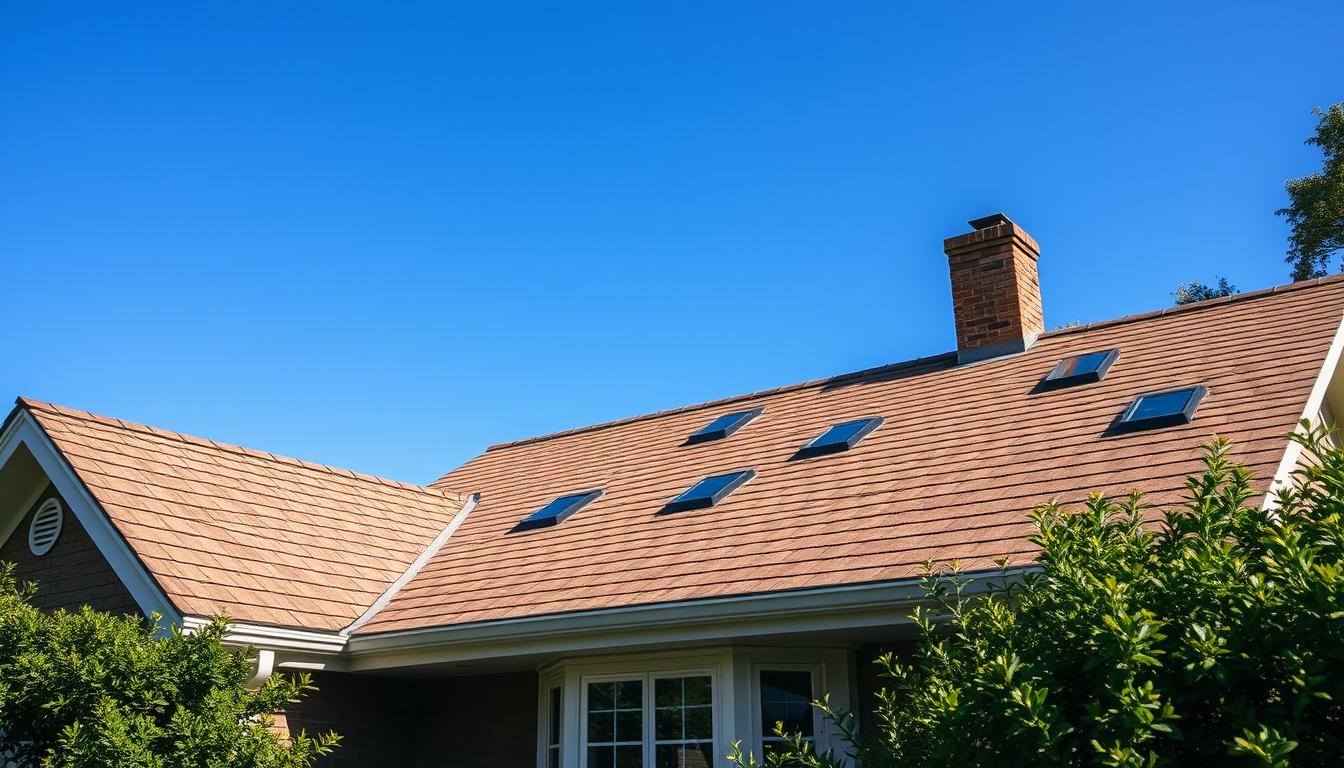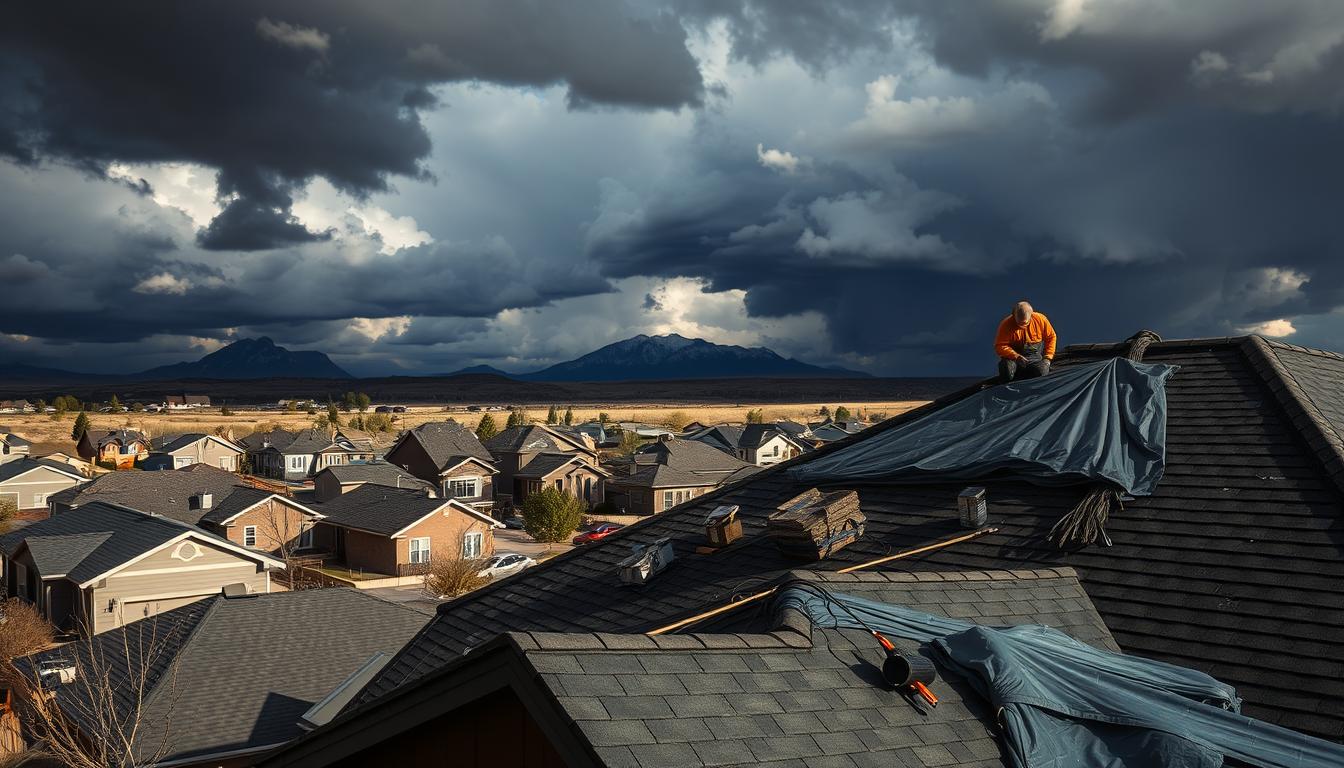Choosing the right siding for your home is key. It keeps your property safe and looks great. In Colorado Springs and other places, siding does more than just cover the house. It’s an investment in your home’s look and life span.
When picking siding, think about how long it lasts, how easy it is to care for, and how it looks. Today, homeowners have many choices. These choices balance protection, save energy, and make your home look amazing. Whether it’s classic brick or new vinyl, the right siding can change your home’s look and keep it safe from the weather.
Key Takeaways
- Siding protects homes from environmental elements
- Different materials offer unique aesthetic and functional benefits
- Proper siding selection impacts home value and energy efficiency
- Professional installation ensures optimal performance
- Material choice depends on local climate and budget
Understanding Home Siding Options and Their Importance
Choosing the right siding for your home is key. It protects your property and shapes its look. Your home’s exterior fights off the weather and shows off its style.
When picking siding, homeowners think about many things. They consider how it looks, how well it protects, and how it affects their home’s value.
Protection Against Weather Elements
Different siding materials handle the weather in their own ways. Important factors include:
- Resistance to wind damage
- Water and moisture protection
- UV ray deflection
- Temperature fluctuation durability
LP® SmartSide® Trim & Siding can stand up to winds of up to 200 miles per hour. This shows it’s very protective.
Impact on Home Value and Curb Appeal
The siding you choose affects your home’s appeal. Modern siding options add beauty and show your home is well-kept. Styles like board and batten and lap siding offer many design choices.
Energy Efficiency Benefits
Choosing the right siding also helps with energy use. Insulated siding can:
- Lower your utility bills
- Help the environment
- Keep your home’s temperature steady
Energy-saving materials make your home more energy-efficient. This can greatly reduce your heating and cooling costs.
Popular Traditional Siding Materials
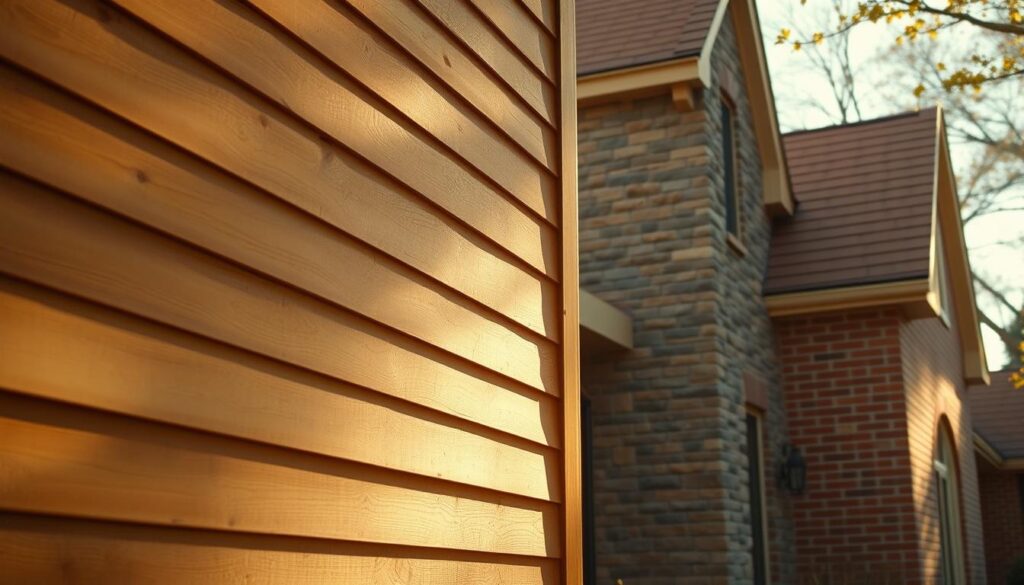
Homeowners have many classic siding materials to pick from. Each has its own benefits and looks great. Vinyl, wood, and brick are the top choices for keeping homes looking good and safe.
Vinyl siding is a cost-effective option. It costs between $3 to $12 per square foot. It’s easy to care for and lasts 30 to 40 years, perfect for those watching their budget.
- Vinyl siding advantages:
- Low initial cost
- Minimal maintenance requirements
- Wide range of color options
- Wood siding benefits:
- Natural aesthetic appeal
- Excellent temperature regulation
- Versatile painting and staining options
- Brick siding characteristics:
- Exceptional durability
- Classic architectural appearance
- Superior insulation properties
Wood siding gives a classic look and costs $2 to $5 per square foot. Properly maintained wood siding can last significantly longer than vinyl. It keeps homes cool in summer and warm in winter, saving on energy bills.
Brick siding is the most traditional and durable choice. It costs $9 to $28 per square foot. It lasts for centuries with little upkeep in the first 25 years. Its solid build protects against weather and increases a home’s value.
Modern and Specialized Siding Solutions
Today, homeowners can choose from advanced siding technologies. These offer great protection, efficiency, and look. The world of exterior home protection has changed a lot. Now, we have new solutions that go beyond old materials.
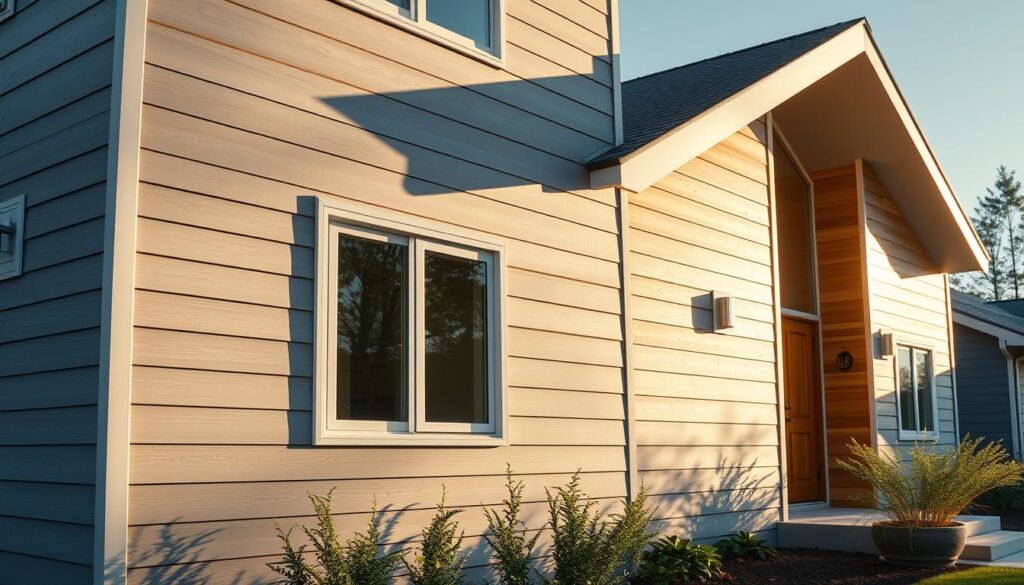
New technologies have changed siding options. They make materials that work well in tough conditions. Now, homeowners can find siding that lasts long and saves energy.
Engineered Wood Innovation
Engineered wood is a big step forward in siding. It brings many benefits:
- It fights off rot and insects well
- It’s strong and sturdy
- It’s made in a way that’s good for the planet
- It needs less upkeep
Metal Siding Applications
Metal siding is a strong choice for modern homes. It can handle winds up to 140 mph. It also lasts 40-60 years, making it a great value.
Composite Materials Technology
Fiber cement siding is a top pick among composite materials. It has many good points:
- It keeps out moisture and termites
- It’s fire-resistant
- It comes in many looks
- It’s easy to keep up
Insulated siding also helps save energy. It keeps homes warm in winter and cool in summer. These new options show big steps forward in building materials.
Choosing the Right Siding for Your Climate
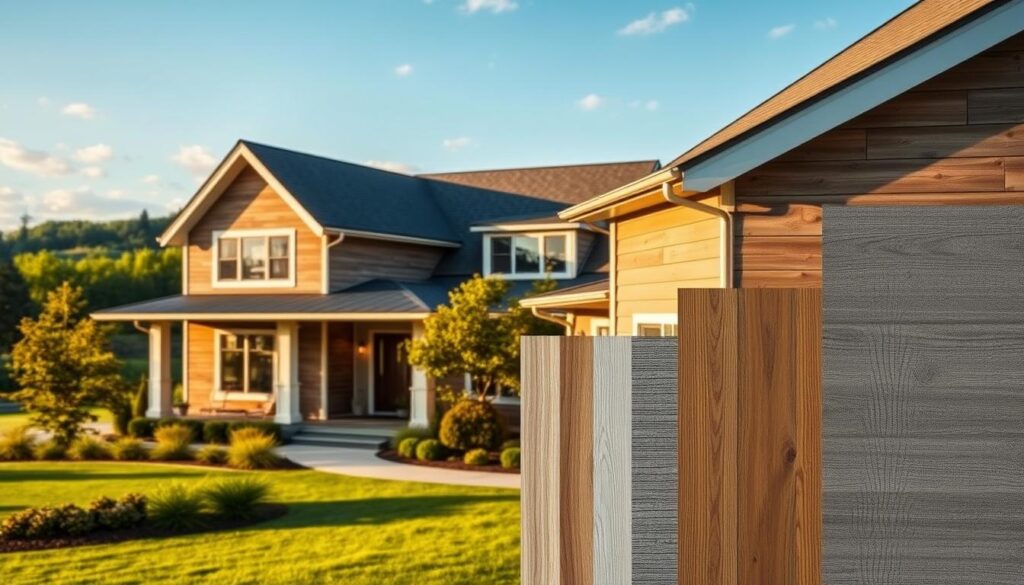
Choosing the right siding for your home is more than just looks. The climate you live in is key to picking the best siding. It’s important to think about how different materials handle different weather.
When looking at siding options, several important factors come up:
- Temperature resistance
- Moisture protection
- UV damage resilience
- Thermal expansion capabilities
Stone veneer siding is a great choice for tough climates. It’s durable and looks natural. It also protects well against temperature changes and keeps its good looks.
Different siding styles offer unique benefits:
- Fiber-cement siding: Lasts up to 50 years
- Vinyl siding: Can withstand winds up to 190 mph
- Engineered wood: Light and resists moisture
In areas with wild weather, picking the right siding is crucial. Homeowners should look for materials that keep warm in, keep moisture out, and last long. Stone veneer siding is a smart pick for those who want both protection and beauty.
Cost Analysis and Investment Value
Homeowners need to think about the money when choosing siding. It’s not just the upfront cost. It’s also about long-term benefits, upkeep, and protecting your home.

Material Price Comparisons
Siding prices vary, fitting different budgets. Here’s a look at average costs per square foot:
- Vinyl siding: $2.50 – $10.75
- Fiber cement siding: $4.50 – $11.25
- Wood siding: $2.25 – $15.00
- Brick veneer: $8.00 – $13.00
- Stone veneer: $8.50 – $17.50
Installation Cost Factors
Several things affect the total siding cost. Labor costs are usually $1 to $12 per square foot. Other costs include:
- Permit fees: $200 average
- Removing old siding: About $1,000
- Installing house wrap: $150 – $300
- Adding insulation board: $500 – $1,000
Long-term Maintenance Expenses
The siding color and material you choose affects maintenance costs. Different materials last longer and need different care:
- Vinyl siding: 20-40 years, easy to maintain
- Wood siding: 30 years, needs painting often
- Fiber cement: Up to 50 years, paint every 10-15 years
- Brick and stone: Over 50 years, little upkeep
Installing siding on a 1,000-square-foot home can cost around $20,000. Both material and labor costs are big parts of the investment.
Conclusion
Choosing the right home siding is key. It affects your home’s safety, energy use, and looks. Each siding type has its own benefits, like vinyl’s cost-effectiveness or brick’s long life.
The best siding fits your budget, upkeep needs, and climate. It also should match your home’s style.
Homeowners need to think about cost, installation, and energy savings. Vinyl is affordable, while fiber cement is tough against fire and rot. There are many options, from wood to metal, for different budgets and tastes.
The Rich Co helps homeowners pick the right siding. Our team knows the details of each material. We can guide you to the best choice.
Call us at (719) 287-5385 for a personalized consultation. We serve Colorado Springs and aim to protect and enhance your home.
Quality siding is more than looks. It boosts your home’s value, comfort, and strength. Our experts will help you choose wisely.

